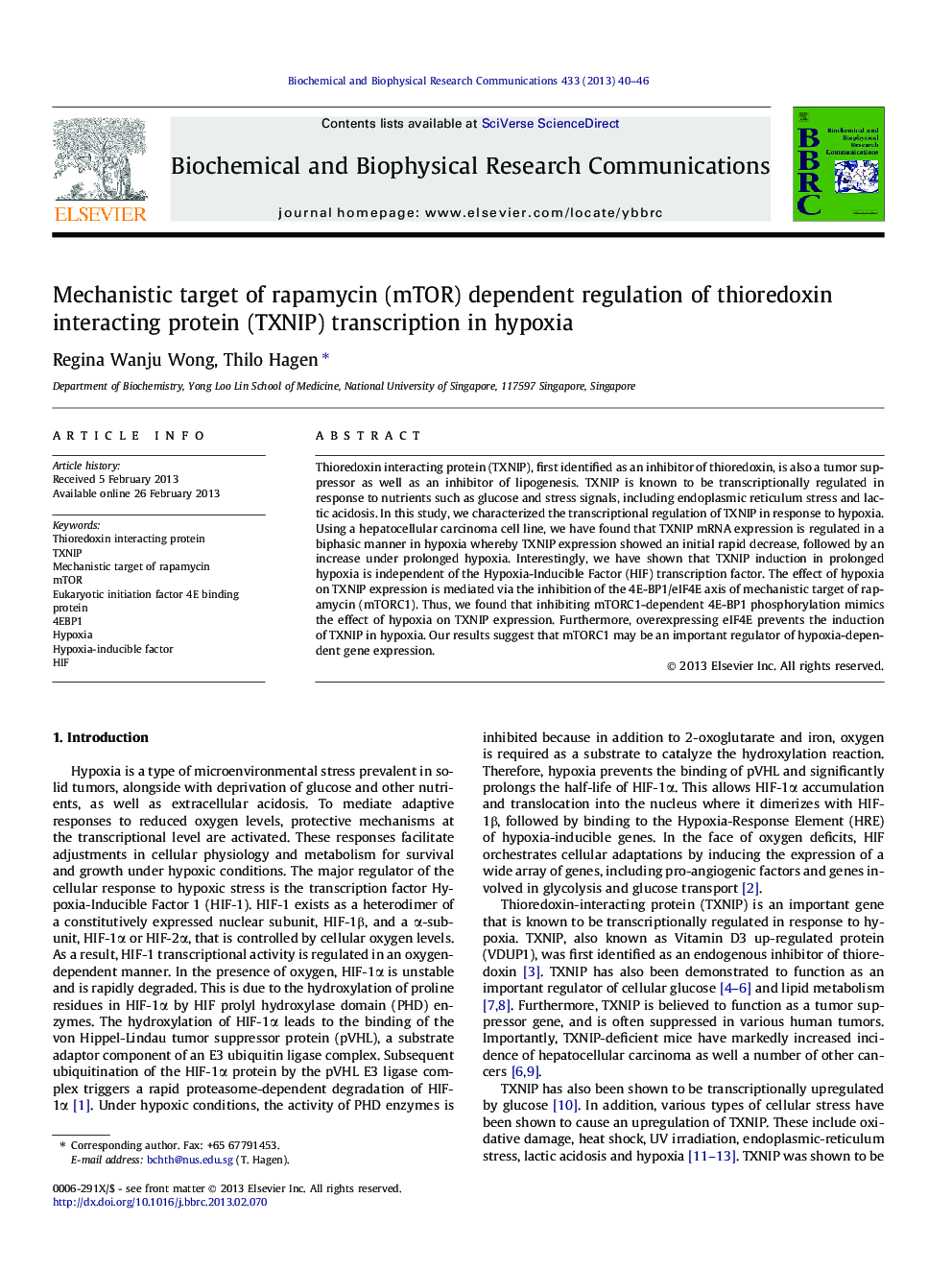| Article ID | Journal | Published Year | Pages | File Type |
|---|---|---|---|---|
| 1928758 | Biochemical and Biophysical Research Communications | 2013 | 7 Pages |
Thioredoxin interacting protein (TXNIP), first identified as an inhibitor of thioredoxin, is also a tumor suppressor as well as an inhibitor of lipogenesis. TXNIP is known to be transcriptionally regulated in response to nutrients such as glucose and stress signals, including endoplasmic reticulum stress and lactic acidosis. In this study, we characterized the transcriptional regulation of TXNIP in response to hypoxia. Using a hepatocellular carcinoma cell line, we have found that TXNIP mRNA expression is regulated in a biphasic manner in hypoxia whereby TXNIP expression showed an initial rapid decrease, followed by an increase under prolonged hypoxia. Interestingly, we have shown that TXNIP induction in prolonged hypoxia is independent of the Hypoxia-Inducible Factor (HIF) transcription factor. The effect of hypoxia on TXNIP expression is mediated via the inhibition of the 4E-BP1/eIF4E axis of mechanistic target of rapamycin (mTORC1). Thus, we found that inhibiting mTORC1-dependent 4E-BP1 phosphorylation mimics the effect of hypoxia on TXNIP expression. Furthermore, overexpressing eIF4E prevents the induction of TXNIP in hypoxia. Our results suggest that mTORC1 may be an important regulator of hypoxia-dependent gene expression.
► Hypoxia causes an initial TXNIP downregulation followed by an induction. ► TXNIP induction in response to prolonged hypoxia is HIF-independent. ► The effect of hypoxia on TXNIP expression is mediated via inhibition of the 4E-BP1/eIF4E axis of mTORC1. ► mTORC1 may be an important regulator of hypoxia-dependent gene expression.
